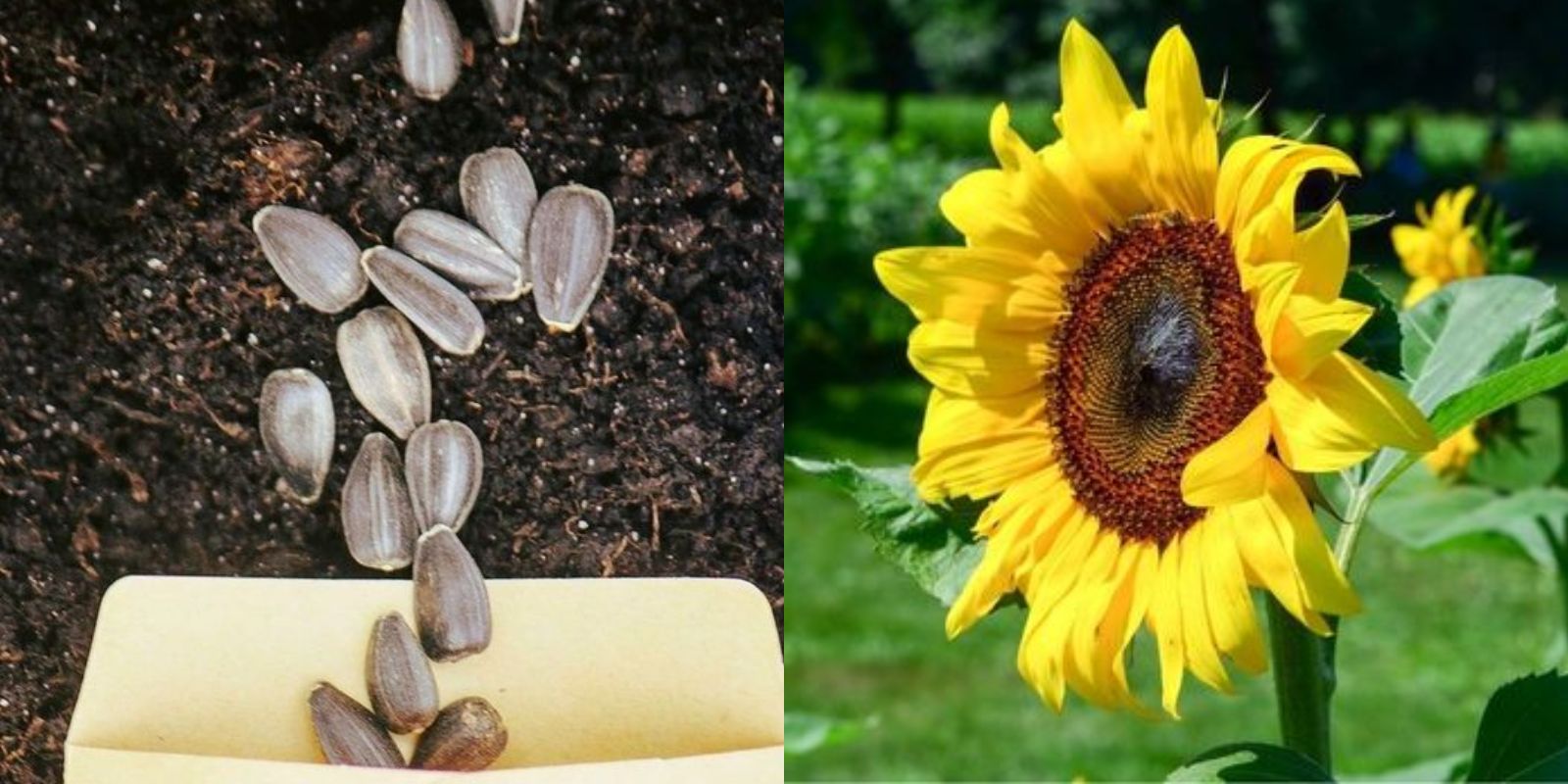Sunflowers (Helianthus annuus) are iconic garden plants renowned for their bold, vibrant blooms and towering presence. These cheerful flowers bring a touch of sunshine to any garden and are relatively easy to grow, making them a favorite among gardeners of all experience levels. This comprehensive guide will walk you through every step of growing sunflowers, from selecting the right variety to ensuring a bountiful harvest.
Choosing the Right Sunflower Variety
Sunflowers come in a variety of shapes, sizes, and colors. When selecting seeds, consider the following options:
- Dwarf Varieties: Ideal for small gardens or containers. Varieties like ‘Sunny Smile’ and ‘Teddy Bear’ grow to a height of 1-3 feet and have charming, compact blooms.
- Standard Varieties: These are the classic sunflowers with large, single blooms. ‘Autumn Beauty’ and ‘Mammoth Russian’ can grow up to 6-10 feet tall and are perfect for creating a dramatic display.
- Multi-Branching Varieties: These sunflowers produce multiple blooms per plant. ‘ProCut Orange’ and ‘Sunfinity’ are excellent choices for extended blooming periods and increased flower production.
Planting Sunflowers
Timing and Location
Sunflowers are sensitive to frost, so it’s essential to plant them after the last frost date in your area. They thrive in warm temperatures and require full sun, meaning at least 6-8 hours of direct sunlight per day.
Soil Preparation
Sunflowers prefer well-drained, fertile soil with a pH level between 6.0 and 7.5. Prepare your garden bed by:
- Clearing Debris: Remove weeds, rocks, and other debris from the planting area.
- Tilling: Loosen the soil to a depth of 12-15 inches to promote healthy root growth.
- Amending Soil: Incorporate compost or well-rotted manure to improve soil fertility and structure.
Sowing Seeds
- Direct Sowing: Sunflowers are typically direct-seeded into the garden. Sow seeds about 1 inch deep and space them 6-12 inches apart, depending on the variety. For larger varieties, space seeds further apart to allow for their growth.
- Seedlings: If starting indoors, sow seeds in biodegradable pots 6-8 weeks before the last frost. Transplant seedlings outdoors once they have at least two sets of true leaves and after the danger of frost has passed.
Caring for Sunflowers
Watering
Sunflowers have deep roots, so they are relatively drought-tolerant once established. However, regular watering is crucial, especially during dry spells. Water at the base of the plant to avoid wetting the foliage and to encourage deep root growth. Aim to keep the soil consistently moist but not waterlogged.
Fertilization
Sunflowers are heavy feeders and benefit from regular fertilization. Use a balanced fertilizer or one with a higher phosphorus content to encourage strong root development and blooming. Apply fertilizer at planting and again when the plants are about 6-8 inches tall.
Supporting Tall Varieties
For tall sunflowers, staking may be necessary to prevent them from bending or breaking in the wind. Use stakes or cages to provide support, placing them early in the growing season to avoid disturbing the roots later.
Managing Pests and Diseases
Sunflowers are generally resilient but can be susceptible to certain pests and diseases:
- Pests: Watch for aphids, spider mites, and sunflower beetles. Use organic insecticides or neem oil if needed.
- Diseases: Common issues include powdery mildew and rust. Ensure good air circulation by spacing plants properly and avoid overhead watering to minimize fungal problems.
Harvesting Sunflowers
Sunflowers are ready to harvest when the back of the flower head turns yellow and the seeds are plump. Follow these steps for a successful harvest:
- Cutting: Use sharp garden shears or pruners to cut the flower head from the plant, leaving a few inches of stem attached.
- Drying: Hang the flower heads in a dry, well-ventilated area, such as a shed or garage. Allow them to dry for 1-2 weeks until the seeds are fully matured and can be easily removed.
- Storing: Once dried, remove the seeds and store them in an airtight container. You can also save seeds for next season by keeping them in a cool, dry place.
Additional Tips for Stunning Sunflowers
- Companion Planting: Sunflowers make excellent companions for vegetables like tomatoes and cucumbers. Their height can provide shade and support, while their vibrant blooms attract pollinators.
- Seasonal Care: In cooler climates, consider planting sunflowers in raised beds or containers to extend the growing season and protect them from late frosts.
- Cut Flowers: Sunflowers make beautiful cut flowers. Harvest them in the morning for the best vase life, and add a floral preservative to keep them fresh longer.
- Wildlife Friendly: Sunflowers attract birds, bees, and butterflies, making them a great choice for creating a wildlife-friendly garden.
Conclusion
Growing sunflowers is a gratifying and relatively straightforward endeavor that yields impressive results. By selecting the right variety, providing proper care, and managing pests and diseases, you can enjoy a garden full of vibrant, towering blooms. Share your sunflower successes with fellow gardeners and use hashtags like #SunflowerJoy, #BloomingBeauty, and #GardenDelight to connect with a community of passionate garden enthusiasts.
Happy gardening and may your garden be filled with the bright, cheerful glow of sunflowers! 🌻

